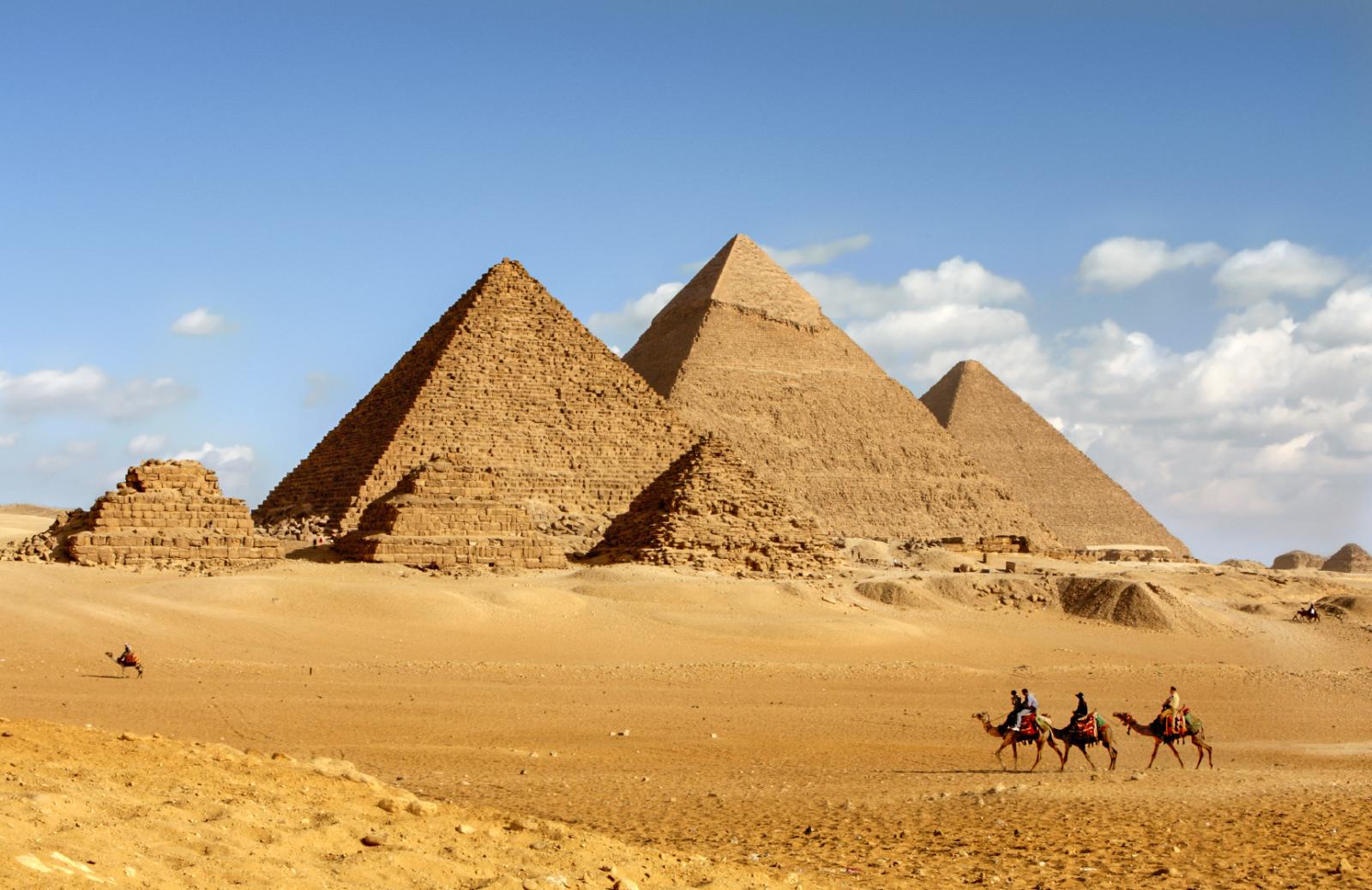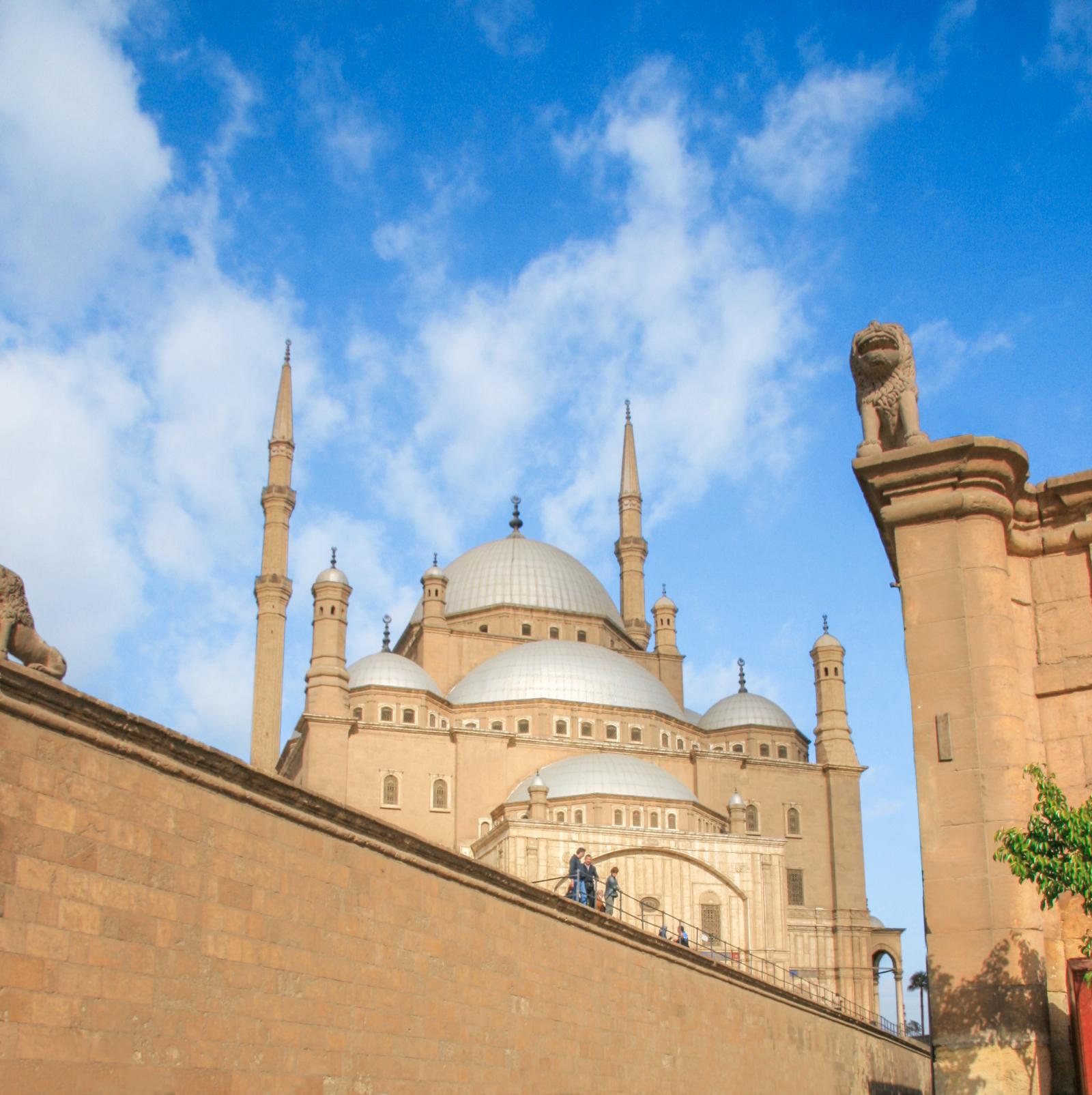Featured Tours
You are here
Uncover the ancient secrets of Egypt amid the welcoming culture of today. See the pyramids from astride a majestic camel.
Explore the Temple of Karnak's 136 souring pillars. Visit Queen Nefertari's tomb in the Valley of the Kings. Skim the waters of the Nile by traditional felucca. Enjoy the fragrances of Aswan's spice market. Join our expert Egyptologists on a 12-day cruise tour through Egypt on board the modern Nile ships, owned and operated by Viking.
Day 1 - Cairo, Egypt
Arrive and check in to your hotel. It has been said of Egypt’s exhilarating capital, “He who has not seen Cairo has not seen the world.” Certainly, the heart of the nation beats with an unbridled passion in this city made prosperous over millennia as a stopover for Sahara caravans on trade routes to Byzantium. Amid the stimulating strum, the insistent beauty of everyday life reigns here, with the serene Nile sliding through like an entrancing serpent. Cairo’s very age mesmerizes; its monuments have stood here for more than 5,000 years.
Day 2 - Cairo, Egypt
For centuries, Cairo has played a central role in religious and cultural developments in Egypt. Today, the city is home to the only Wonder of the Ancient World still intact—the Great Pyramids of Giza. And the city’s historic district, Old Cairo, boasts the world’s highest concentration of Islamic architecture. In addition to these monuments, Cairo has been making efforts as a member of the UNESCO Creative City of Crafts and Folk Art to preserve its traditional craftwork heritage including glassblowing, coppersmithing, pottery, ceramics and jewelry.
Day 3 - Cairo, Egypt
A captivating world that has withstood the tests of time unfolds beyond the medieval walls enclosing Old Cairo. Muizz Street, named for the Fatimid caliph who established Cairo as Egypt’s capital in 969, was the city’s main thoroughfare, running between the 11th-century city gates Bab al-Futuh and Bab Zuweila. Its splendid Islamic architecture—from elegant mosques and mausoleums to ornate palaces and former residences of Egyptian dignitaries and prominent merchants—provides a glimpse into the glory of the Fatimid dynasty and the periods that followed.
Day 4 - Luxor, Egypt
After breakfast, check out of your hotel and fly to your embarkation city. Luxor is set on the east bank of the Nile River and once served as the capital of Egypt’s New Kingdom. Today, it is a UNESCO World Heritage Site lined with beautiful colonial hotels and some of the world’s most ancient and significant ruins. Many consider this city, watched over by graceful single-sailed feluccas plying the Nile, one of the world’s great open air museums. The sprawling Temples of Luxor and Karnak on the east bank are linked by the ancient Avenue of the Sphinxes. On the west bank, in the Valley of the Kings, lie the tombs of Egypt’s great pharaohs.
Day 5 - Qena, Egypt
Known in ancient Egypt as Caene, Qena’s situation on the banks of the Nile River has bolstered its prosperity over millennia. Merchants and travelers have long journeyed here from the Red Sea, through the valley, bringing goods from Persia and beyond. The Sheikh el-Qenawi Mosque on the main square serves as a monument to the city’s rich and all-embracing Islamic and Sufi past. Qena is mostly known as the gateway to the magnificent ruins of the Dendera Temple. Its stone gate and towering columns adorned with hieroglyphics are some of Egypt’s best-preserved structures.
Day 6 - Luxor, Egypt
Luxor lies amid what is arguably one of the world’s largest archaeological sites: Thebes, once a thriving imperial capital. In antiquity, the Nile River ran through Thebes, dividing it into a “City of the Living” and a “City of the Dead.” The former referred to the east bank (modern-day Luxor) as this was where the majority of the city’s population—and at times, Egypt’s rulers—made their home. The west bank (known today as Kurna) was designated the latter as it served as a necropolis, dotted with the lavish resting places of royalty and other nobility.
Day 7 - Esna, Egypt
Ancient Egyptians knew Esna as Latopolis, named for the largest of the perch species that swam in the Nile’s sacred waters. Its ancient past lives on in the colorful street market overflowing with fabrics, carpets, brassware, mother-of-pearl keepsakes and more. Esna’s glorious Temple of Khnum is celebrated for its 1st-century Roman Hypostyle Hall, 24 columns topped with intricately carved floral capitals. Its walls are adorned with images of Roman emperors making offerings to Egyptian gods.
Day 8 - Aswan, Egypt
Aswan stands at what was once the northern border of ancient Nubia, a remarkable region that encompassed the land eastward from the Libyan Desert to the Red Sea and northward from central Sudan to southern Egypt. As a UNESCO Creative City of Crafts and Folk Art, present-day Aswan strives to preserve its rich heritage. Its efforts include the Aswan Folk Dance Troupe that performs internationally, the Nubian Museum showcasing Nubian daily life and craftwork, and the Aswan International Symposium of Sculpture encouraging the practice of ancient Egyptian granite stone carving.
Day 9 - Aswan & Kom Ombo, Egypt
Located at the first cataract of the Nile, a set of rapids coursing through a rocky riverbed, Aswan has long been a terminus town on the Nile. Today, the trading tradition continues in the city’s lively market near the Nile’s banks. The city also thrived due to the massive quantities of granite quarried here to build the country’s countless ancient temples, obelisks and pyramids. In the 1960s, completion of the Aswan High Dam created Lake Nasser. As the lake rose, the city became a magnet for archaeologists intent on saving ancient temples from submersion.
Kom Ombo is a small town along the Nile. In the heart of one of Egypt’s fertile agricultural regions, it is surrounded by vast fields of sugarcane and corn. The village is home to a large Nubian population, many of whom were displaced when their homes were submerged by construction of the Aswan High Dam and the creation of Lake Nasser. The town’s highlight is its namesake temple, perched on a low hill overlooking the Nile. Construction was started by an Egyptian pharaoh in the 2nd century BC and completed by a Roman emperor around 30 BC.
Day 10 - Edfu & Luxor, Egypt
Edfu is steeped in Egyptian legend. In this sacred place, ancient myth says that the falcon god Horus battled his uncle Seth after Seth brutally killed Horus’s father Osiris. To honor Horus, the people of Edfu built a grand temple from 237 to 57 BC, a young structure by Egyptian standards. Egyptologists have paid particular interest to its design, as it closely resembles that of much older temples. Nearby, an ancient settlement provides hints of life along the Nile, with its interesting artifacts dating as far back as 3100 BC.
Home to a wealth of archaeological treasures, Luxor boasts a rich history and cultural heritage. One of the best ways to experience this is with a visit to the Luxor Museum. Located downtown, its doors have been opened to the public since 1975, when it was founded under the initiative of the Ministry of Culture of Egypt. Its thoughtfully curated collection showcases artifacts spanning from the Old Kingdom to the Mamluk sultanate. Among its most notable exhibits are those displaying the mummies of Ahmose I and Ramses I, and objects excavated from King Tutankhamen’s tomb.
Day 11 - Cairo, Egypt
After breakfast, disembark your ship and fly to your destination. Arrive and check in to your hotel. Souks (marketplaces) are central to Egypt’s social, cultural and economic traditions. A microcosm of the city, they provide a glimpse into local life, history, art, crafts and food. And in Cairo, they are in abundance, with one of its most notable lying in the historic heart of the city. Originally established as a caravansary in 1382, Khan el-Khalili is not only the largest souk in Cairo, but also the oldest in the Middle East. Its vast labyrinth of passageways is lined with bustling stalls and shops offering a wide range of goods.
Day 12 - Cairo, Egypt
Cairo has been a cultural capital of the Middle East for years. Its long-awaited Grand Egyptian Museum is the largest archeological museum in the world and home to King Tut’s entire treasure collection. As the hub of the Arab film world, leading stars of the silver screen and television have made Cairo their home. Residents here follow a hectic rhythm, with cars honking, vendors shouting and throngs of people wandering the streets, from morning ‘til night. But its infectious spirit makes this bustling capital a delight to explore. After breakfast, check out of your hotel and journey home.
CALL FOR QUOTE
12 Days | 11 Guided Tours | 1 Country
Included:
One complimentary shore excursion included in every port of call
Free Wi-Fi (connection speed may vary)
Beer, wine & soft drinks with onboard lunch & dinner
24-hour specialty coffees, teas & bottled water
Port taxes & fees
Ground transfers with Viking Air purchase
Visits to UNESCO Sites
Enrichment lectures & Destination Performances
Disclaimer: We do our utmost to ensure that the information posted on our website is correct at time of publication, however trip details and promotions are subject to change without notice by the suppliers and operators involved. We update the information as soon as possible when changes are advised to us, however we cannot assume responsibility for such changes made by the suppliers and operators. Terms and conditions per supplier(s). Please confirm details and booking information with your travel advisor. Contact us for the most up to date pricing and availability.
Thank you for travelling with
We appreciate your business and look forward to working with you again soon.

